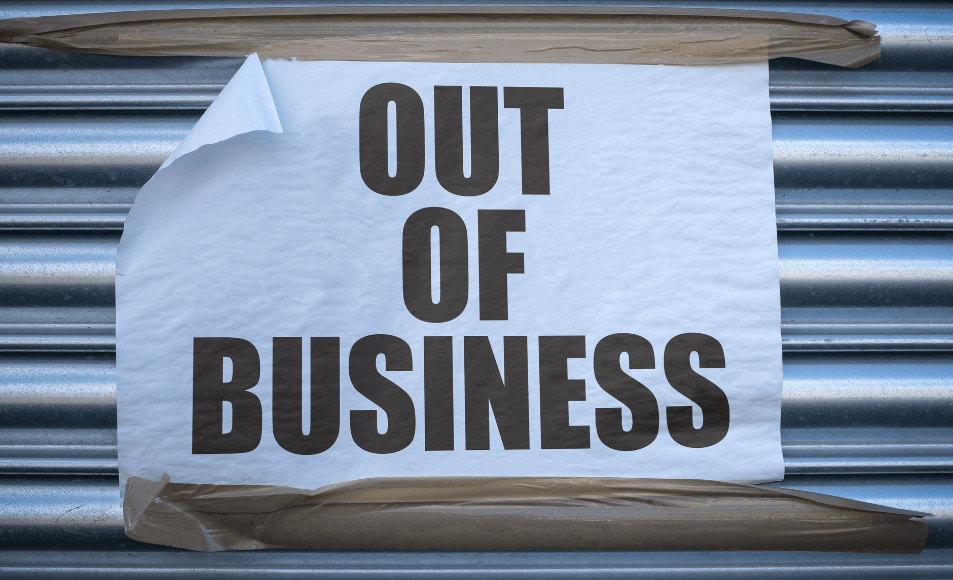Since the Global Financial Crisis of 2007 and 2008, the UK economy has suffered from stagnation. Austerity and the fall of real wages caused sluggish growth, hindered by the impact of Brexit. And then, the 2020 pandemic hit, the war in Ukraine drove prices up, and the cost of living compounded a multitude of unprecedented macroeconomic pressures that led UK insolvency to hit the highest levels since 2009.
In June (2023) the number of insolvencies was 27% higher and compulsory liquidations had a 77% increase from June 2022, a stark difference from the historical low in compulsory liquidations during Covid-19.
So, what caused this? There are many contributing factors, but we’re going to investigate the overarching few to understand better what these figures are telling us.
Let’s start with the stats:
18 months prior – December 2021
The Covid pandemic had raged on for nearly two years at this point, and Government support was ending. Therefore, this was another in a string of big months for insolvency, with figures reaching 1,486 in England and Wales. The numbers were 20% higher than the pandemic-affected number in December 2020, and 33% higher than the pre-pandemic 2019 numbers. Since there were fewer compulsory liquidations with support schemes in place, it was predicted to get much worse once the support ended, furlough was withdrawn and Covid loans were recalled.
12 months prior – June 2022
Arguably the first ‘normal’ summer for nearly two years, the rate of increase in insolvencies dropped slightly in June 2022 but remained 15% higher than the number registered three years earlier (pre-pandemic).
6 months prior – December 2022
The winter of 2022 saw an acceleration in the insolvency growth rate with 1,964 registered insolvencies: That’s 76% higher than the pre-pandemic numbers of 2019. There were also 183 compulsory liquidations, 8% higher than in 2019. This was the first-time compulsory liquidations exceeded pre-pandemic numbers in monthly comparison –largely because of winding-up petitions presented by HMRC.
2023
- January
- 1,671 insolvencies, 7% higher than Jan 2022, 11% higher than Jan 2020
- 189 compulsory liquidations, 52% higher than Jan 2022.
- Increase in winding-up petitions presented by HMRC.
- February
- 1,783 insolvencies, 17% higher than Feb 2020.
- Compulsory liquidations, twice as many as Feb 2022, 32% lower than Feb 2020
- March
- 2,457 insolvencies, 16% higher than March 2022.
- 288 compulsory liquidations, more than twice the amount of March 2022.
- April
- Current trend is driven by small company failures, but next may be larger company failures.
- May/June
- UK insolvency hits highest level since 2009.
The global pandemic
From 2020 to 2022, Covid-19 changed how people live, interact, and how businesses operate.
Due to the economic interruption of the pandemic, many businesses couldn’t access their normal client base, and the ones that didn’t move online struggled to generate any income.
Covid loans, and the Job Retention Scheme, played a huge part in keeping businesses afloat. There were much fewer insolvencies as money was available to everyone. However, some businesses that may have struggled and risked insolvency in the normal economic climate, ended up taking significant loans from the government, potentially more than they could ever pay back.
August 2021 was the first time that year that monthly insolvencies had been higher than the corresponding month in 2019 (pre-pandemic). At this time businesses were still benefiting from government support measures and had a little more protection than usual. This rise in insolvencies, despite the financial buffer still being in place, was a sure sign of things to come…
In November 2022, as the final support loans ceased, we saw the highest insolvency numbers in England and Wales since January 2019. This came at a time when compulsory liquidations were still a fraction of normal volumes, so once the loan money ran out, businesses began to struggle, and insolvencies rose rapidly.
Since many businesses need to repay loans taken during the pandemic or have gone insolvent as they didn’t manage to recover due to the increasing economic pressures post-Covid, such as inflation and the cost of living crisis. Currently, the UK government has the wherewithal to supply any more loans or support to businesses, aside from some minor support for catastrophically high energy costs in winter 2022.
Overall, whilst it may not have been the sole cause, the disruption of the pandemic provided fertile ground for other pressures to create the spike we’re now seeing.
Macroeconomic pressures
So aside from Covid, are there any other explanations for the high rates of insolvency within the UK? Economists agree that there are a myriad of reasons for the sharp rise in struggling businesses, the main ones being economic pressures that no one expected or prepared for hitting in quick succession.
The invasion of Ukraine
The invasion of the second-largest country in Europe in February 2022, when Russia declared war and attached a largely unprepared Ukraine, destabilised financial markets around the world. The UK economy was hit with a sharp rise in gas and oil prices; Global oil prices increased by 11% and UK wholesale gas prices increased by around 40% since the invasion.
This huge increase forced more than twenty UK energy suppliers to go out of business, affecting over two million customers. Gas prices in the UK more than quadrupled for this period and will slowly decrease throughout the remainder of 2023 and 2024.
There is no price cap on business energy rates, so when support came in the form of the Energy Bill Relief Scheme, which offered a discount rate on business energy rates for six months from 1st October 2022, this offered some relief for stretched companies.
Once this ended the government introduced the Energy Bills Discount Scheme, which supposedly will give businesses discounted energy rates for 12 months from 1st April 2023, however, this offers little actual relief from high prices. Pubs and restaurants, on the frontline of outlandish energy bills and staffing issues, sounded the alarm about severe dents in profitability and potential insolvency.
Interest rates and inflation
Although an ever-changing metric, the Bank of England say that interest rates are anticipated to peak at 6.5% by the end of 2023, having raised the base rate fourteen times in a row in recent months. This is one of the highest forecasts in the market and is anticipated to drive the UK economy into a recession.
Businesses with existing loans and mortgages will have higher interest payments, less disposable income, and bigger overheads. This makes it harder to pay off debt quickly, with more capital going directly towards interest payments to the bank. It makes short-term capital less readily available, and more expensive to pay back, reducing the necessary safety net to cover unexpected expenses or to expand, prohibiting growth.
Inflation peaked at 11.1% in October 2022, and as a result, food and or non-alcoholic beverage prices rose by 19.1% in the year to March 2023 – contributing significantly to the cost-of-living crisis. When inflation is sky high, everything costs more and consumers find that their money is worth less. This means companies raise their prices to keep themselves afloat as running costs have also largely increased. However, some organisations have found themselves criticised after posting record profits, paid for by huge bill rises under the guise of inflation.
In recent times, inflation seems to be headed somewhat slowly in the right direction. It was measured as 7.9% in June 2023, lower than the previous month's figure of 8.7%.
Funding is harder to access
UK SMEs face increased demand for borrowing due to economic pressures, but major banks have reduced interest in lending to small businesses due to the amount of risk involved in the current economic climate.
Concerns about funding availability are rising, especially for smaller firms which need the investment to grow. A survey of UK finance brokers indicates a risk-averse decline in major banks' appetite for SME lending, leading to more rejected applications.
The uncertainty in the economy, coupled with the reluctance of banks to lend to smaller businesses, poses a significant threat to the once-thriving SME sector in the UK. Whilst challenger banks and financial disrupters still offer some semblance of hope, the overall outlook for SME funding remains challenging, and SME directors must manage their finances prudently to survive and grow.
Silicon Valley Bank and other similar banks which failed were known for investing in risky start-ups. This has made traditional investors much more wary of investing in smaller companies and set a preference for safer, larger businesses despite their smaller returns.
And with the economic downturn still raging on, we’re now starting to see large, historic, and household name-level companies fail – not just SMEs.
Bad debt
When a business goes insolvent, there is a hierarchy of debt with HMRC at the top. This means that any companies linked to it have little to no chance of reclaiming money that was owed to them. Of course, this causes a ripple effect; a big client or supplier going insolvent can cause insolvency for a small firm. Bad debt snowballs through the economy and supply chains, getting bigger until it reaches people who can absorb the debt, and taking multiple businesses out on its journey of destruction with a chain of business failure.
We’ve always maintained that the current insolvency surge is being driven by smaller companies, which is why we haven’t seen a significant adverse impact on employment numbers. But as the number of larger company insolvencies increases it seems likely that there is more insolvency to come.
As larger companies succumb to multiple pressures, we face the spectre of an increasing domino effect, driving a secondary surge in small business failure. It’s relatively rare for a smaller company's failure to directly result in the insolvency of one of its suppliers, but that’s not the case with larger corporate failures.
For example, how many failures will be precipitated by the fall of Construction giant Henry Construction Projects Limited? To an extent, it will depend on the outcome for unsecured creditors, but we predict it's not likely to be good.
Avoid bad debt and find opportunities with Red Flag Alert’s checking platform.
A series of macroeconomic pressures after the 2020 pandemic created the perfect storm for the insolvency snowball effect we’re currently experiencing. Our current Red Flag Alert projections predict we are unlikely to see insolvency volumes levelling off until March 2024, making it more crucial than ever to safeguard your business from risk.
Red Flag Alert offers:
- Access to our system’s industry-leading financial health ratings for over 15 million businesses.
- Over 100,000 updates per day and 50 new companies per month
- The ability to monitor the financial health of new and existing customers.
- A more complete picture of financial health than any standard credit reports.
- The ability to download credit reports in a variety of formats.
- The ability to filter sales prospects by credit status, making it easier to find customers in good financial shape.
- Instant access through your CRM using our API.
Red Flag Alert is the UK’s most comprehensive credit risk tool. To discover how your business could benefit from Red Flag Alert’s data set to protect and improve your decision-making, request a free trial today.




